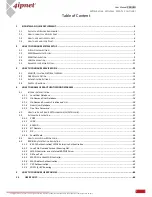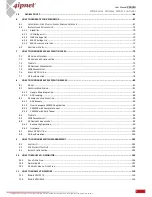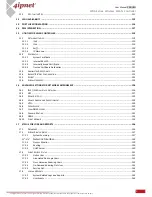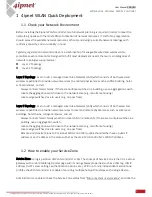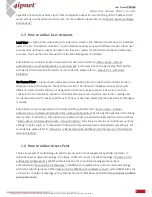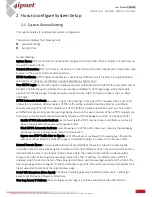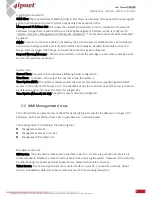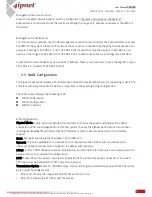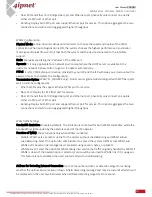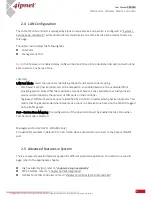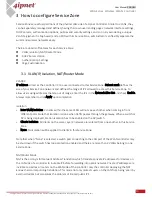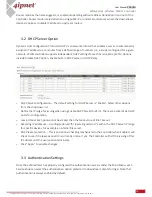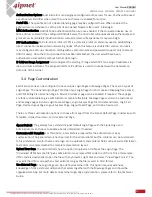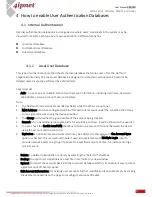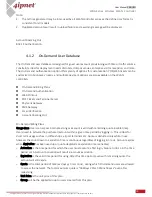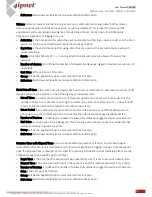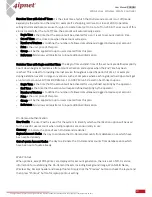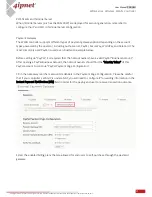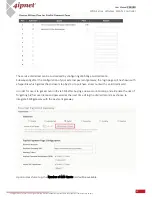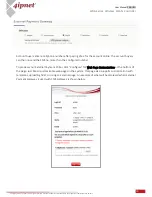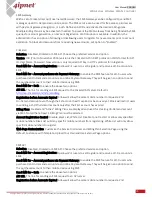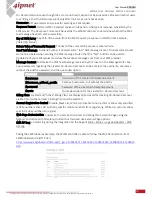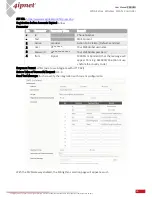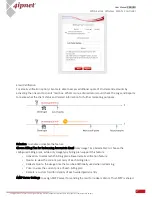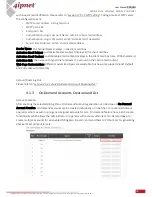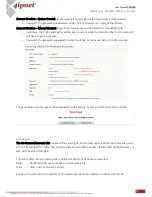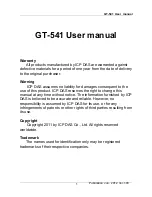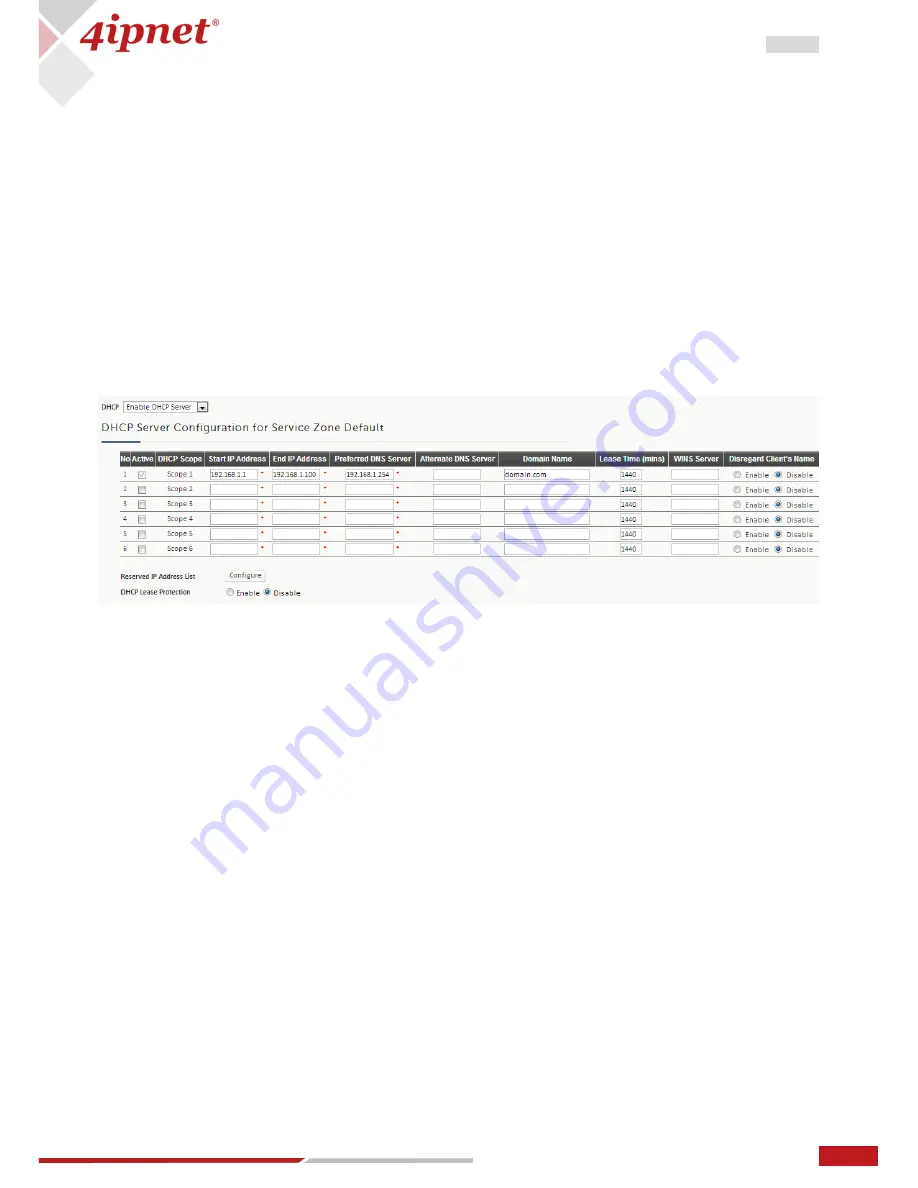
14
User Manual ENGLISH
WHG-Series Wireless WLAN Controller
Copyright © 2017, 4ipnet, Inc. All rights reserved. All other trademarks mentioned are the property of their respective owners.
Router mode as the name suggests, is a network operating without address translation in and out of the
Controller. Router mode is selected when using public IP or under circumstances where the downstream
devices requires a routable IP address to upstream routers.
3.2
DHCP Server Option
Dynamic Host Configuration Protocol (DHCP) is a network protocol that enables a server to automatically
assign an IP address to a computer from a defined range of numbers (i.e., a scope) configured for a given
network. WLAN controllers supports independent DHCP settings for each Service Zone profile. Options
include Disable DHCP option, Enable built-in DHCP server or DHCP Relay.
-
DHCP Server Configuration – The default setting for DHCP Server is “Enable”. Select other options
from the drop-down list.
-
Define the IP range for issuing when using Enable DHCP Server (built-in). There are a total of six DHCP
pools for configuration.
-
Lease Time at each pool cannot be smaller than the twice value of Idle Timeout.
-
Reserving IP addresses – A configuration list for reserving certain IP’s within the DHCP Server IP range
for specific devices, for example an internal file server.
-
DHCP lease protection – This is an optional checking mechanism on the Controller when Enabled, will
check to see if the lease expired IP is currently online. If yes, the Controller will halt the issuing of this
IP address until the user session terminates.
-
Click “Apply” to activate changes.
3.3
Authentication Settings
Once the administrator has properly configured the authentication servers under the Main Menu, each
Service Zone can select the authentication option preferred to downstream clients for login. Note that
Authentication is always enabled by default.


